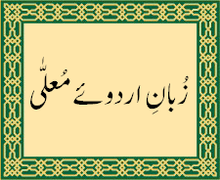SELLER COUPON : --
Moghul Era Rupee Emperor Mohd Shah Dynasty 11.26 Gm Silver Rupee Unique Nice Collectible Coin
₹1,815.00 only.
Out of stock
Check Estimated Delivery Date
Manage your collection at one place
Download Coinage of India App
100% Genuine Item's with Life Time Guarantee🥇🔥🏆
Highlights
Moghul Era Rupee Emperor Mohd Shah Dynasty 11.26gm Gm Silver Rupee Unique Nice Collectible Coin
Moghul Era Rupee Emperor Mohd Shah Dynasty 11.26 Gm Silver Rupee Unique Nice Collectible Coin
On 29 September 1719, Muhammad Shah was given the title Abu Al-Fatah Nasir-ud-Din Roshan Akhtar Muhammad Shah and enthroned in the Red Fort. His mother was given an allowance of 15 thousand rupees monthly for her needs, but the Sayyid Brothers kept the new emperor under strict supervision.
The Mughal Grand Vizier Syed Hassan Ali Khan Barha and his brother the Mughal commander and chief Syed Hussain Ali Khan Barha were well aware that Asaf Jah I and his companions Zain ud-din Ahmad Khan intended to dissolve their administration. The Sayyid Brothers quickly nominated an amateur, Prince Muhammad Ibrahim, who proclaimed himself Mughal Emperor, but he was quickly defeated by the new loyalists of the young Muhammad Shah on 13 November 1720.
On 9 October 1720, Syed Hussain Ali Khan Barha, the commander and chief of the most elite Mughal Army, was assassinated in his encampment in Toba Bhim. The Mughal Emperor Muhammad Shah took direct command of his forces. Asaf Jah I was then dispatched to gain complete control of six Mughal provinces in the Deccan, and Muhammad Amin Khan Turani was assigned as the Mansabdar of 8,000. He was sent to pursue the Mughal Grand Vizier Syed Hassan Ali Khan Barha, who was defeated at the Battle of Hasanpur by Turani, Mir Muhammad Amin Irani and Muhammad Haider Beg. He was captured by Muhammad Shah on 15 November 1720 and executed two years later. Previously the emperor had to fight Muhammad Ibrahim, but young Muhammad Shah defeated him on 13 November 1720. The fall of the Sayyid Brothers marked the beginning of the end of the Mughal Empire’s direct control over its dominions in the Deccan.
In the year 1721, young Muhammad Shah married the daughter of the previously deposed Mughal Emperor Farrukhsiyar.
On 21 February 1722, Muhammad Shah appointed the Asaf Jah I as Grand Vizier. He advised Muhammad Shah to be “as cautious as Akbar and as brave as Aurangzeb“. Asaf Jah I resigned his post as the Grand Vizier when Muhammad Shah expressed negligence towards his administration. Asaf Jah I appointed commander Ewaz Khan as the master of the garrison at Aurangabad, and much of his logistical duties were carried out by Inayatullah Kashmiri.[7] Asaf Jah I left the imperial court in disgust. In 1723, he set out on an expedition to the Deccan, where he fought Mubariz Khan, the Mughal Subedar of the Deccan, who kept the ravaging Marathas at bay. Taking advantage of Mubariz Khan’s conventional weaknesses, Asaf Jah I defeated and eliminated his opponent during the Battle of Shakar Kheda. Asaf Jah I then established the Nizam of Hyderabad in 1725.
During this time, the Mughal-Maratha Wars (1728–1763)[8] would cause irreparable devastation to the inhabitants of the ill-administered Mughal Empire. Despite efforts to counter the rise of rebellions in 1724, by the Nawab of Awadh Saadat Ali Khan and the Mughal Subedar in Bangalore, Dilawar Khan (r.1726–1756), who established a well-protected bastion in the Malabar Coast. Muhammad Ali Khan the Mughal Faujdar of Rangpur and his stern ally Deena Narayan were ambushed out of Koch Bihar by Upendra Narayan a Hindu Bihari and Mipham Wangpo (r.1729–1736) the ruler of Bhutan. Ali Mohammed Khan had established the barons of Rohilakhand. The Nawab of Bhopal, Yar Muhammad Khan Bahadur, also ratified by the Mughal Emperor Muhammad Shah in 1728, countered ceaseless raids by the Marathas in Malwa and nearly began to lose half of his territories in the year 1742.
Muhammad Shah eventually learned the skills of statesmanship after removing his three incompetent advisors, namely Koki Jee (his foster sister), Roshan-ud-Daula (his mercantile friend) and Sufi Abdul Ghafur of Thatta (his spiritual teacher).
In the Punjab region, the Sikhs were at war with Mughal Subedars, and the guerrilla tactics of the Sikh warriors caused devastation. In Ajmer, Ajit Singh carved out a vast territory and allied himself with the renegade Marathas. While in the Deccan the Marathas had ruined Mughal fortifications and were already on the warpath. All this greatly contributed to the decline of the Mughal Empire.
In 1737, the Marathas under Baji Rao I annexed Gujarat, Malwa and Bundelkhand, and raided the Mughal capital Delhi.
In 1739, Nader Shah of Persia, lured by the wealth and weakness of the Mughals, took advantage of a rebellion on his eastern borders near Kandahar and initiated a campaign against the Mughal Empire capturing Ghazni, Kabul, Lahore, and Sindh. He then advanced against Muhammad Shah and defeated him at the Battle of Karnal. The Persians, having crushed the Mughal armies in less than three hours,[9] marched upon and sacked Delhi, hoarding priceless treasures that were taken back to Persia. This event weakened the Mughals significantly, paving the path for more invaders and eventually the East India Company.
In 1748, Ahmad Shah Durrani of Afghanistan invaded the Mughal Empire. Heir apparent Ahmad Shah Bahadur, Grand Vizier Qamaruddin Khan and his son Moin-ul-Mulk better known as Mir Mannu, Intizam-ud-Daula and Safdarjung were sent with 75,000 men after the defeat of Shahnawaz Khan in Lahore. At the Battle of Manupur (1748), Durrani’s 12,000 men were defeated, and he was forced to retreat. There was a great rejoicing for this event throughout the Mughal Empire.
Cultural developments[edit]
<
p style=”margin: 0.5em 0px;font-family: sans-serif;font-size: 14px” data-mce-style=”margin: 0.5em 0px; font-family: sans-serif; font-size: 14px;”>While Urdu (derived from Zuban-i Urdū-yi Muʿallá or in local translation Lashkari Zaban, shortened to Lashkari) was already in use before Muhammad Shah’s reign, it was during his reign that it became more popular among the people and he declared it as the court language, replacing Persian. During Muhammad Shah’s reign, Qawwali was reintroduced into the Mughal imperial court and it quickly spread throughout South Asia. Muhammad Shah is also known to have introduced religious institutions for education such as Maktabs. During his reign, the Quran was translated for the first time in simple Persian and Urdu. Also, during his reign, the formal Turkic dress, normally worn by the high Mughal nobility since Mughals originally hailed from Samarqand, was replaced by the Sherwani.
<
p style=”margin: 0.5em 0px;font-family: sans-serif;font-size: 14px” data-mce-style=”margin: 0.5em 0px; font-family: sans-serif; font-size: 14px;”>Mohammad Shah was a patron of the performing arts, almost at the cost of administrative priorities, paving the way for the disintegration of governance. While Mughal political power did decline in his reign, the Emperor encouraged the arts, employing master artists such as Nidha Mal (active 1735–75) and Chitarman, whose vivacious paintings depict scenes of court life, such as Holi celebrations, hunting and hawking.[10] The Mughal court of the time had musicians such as Naimat Khan, also known as Sadarang, and his nephew Firoz Khan (Adarang), whose compositions popularised the musical form of Khyal.Naimat Khan composed Khyal for his disciples and he never performed Khyal.[11] This key component of Indian classical music evolved, ascended and received princely patronage at the court of Muhammad Shah.[12]
Scientific developments[edit]
<
p style=”margin: 0.5em 0px;font-family: sans-serif;font-size: 14px” data-mce-style=”margin: 0.5em 0px; font-family: sans-serif; font-size: 14px;”>During the reign of Muhammad Shah, a significant scientific work known as the Zij-i Muhammad Shahi was completed by Jai Singh II of Amber between the year 1727 and 1735; it consisted of 400 pages.[13]
Later Mughal-Maratha wars[edit]
After Asaf Jah I left Delhi, the Marathas, who had already expanded up to the river Narmada, invaded the rich province of Malwa in the beginning of 1723. The Mughal Emperor entrusted its defence to its governor, who failed him. By winter of the same year, they reached Ujjain, the capital of Malwa. In 1725, the governorship of Gujarat was transferred to Sarbuland Khan. Enraged by the authority of the Mughal Emperor, the Marathas invaded Gujarat but were routed by Sarbuland Khan and his forces. This was mainly because most of the Maratha forces, including their leader Baji Rao I, were at the time fighting the Asaf Jah I in Hyderabad. The war with Hyderabad, however, proceeded favourably for the Marathas.
In 1728, during February, the Asaf Jah I was decisively defeated at the Battle of Palkhed. In the year 1728, the Marathas led by Baji Rao I and his brother Chimnaji Appa invaded the Mughal province of Malwa and challenged the Mughal Subedar Girdihar Bahadur, who led a fairly large Mughal Army during the Battle of Amjhera. Both Girdihar Bahadur and his trusted cousin Daya Bahadur were defeated and killed. On 29 November, Chimnaji Appa went on to besiege the remnants of the Mughal Army of Malwa during a failed Siege of Ujjain.[15]
In the year 1731, Asaf Jah I the Nizam of Hyderabad had managed to secure the defections of influential Maratha leaders, such as Trimbak Rao Dabhade and Sanbhoji who threatened to abandon the Marathas and join the forces with the Mughal Emperor Muhammad Shah instead. This move was considered unacceptable by Baji Rao I and his brother Chimnaji Appa who led a large well armed Forces of Marathas to intercept Trimbak Rao Dabhade and Sanbhoji during the Battle of Dabhoi, where the defecting factions were all defeated, overrun and killed.[15] Baji Rao I then attacked Gujarat with full force and finally drove out Sarbuland Khan by 1735.
<
p style=”margin: 0.5em 0px;font-family: sans-serif;font-size: 14px” data-mce-style=”margin: 0.5em 0px; font-family: sans-serif; font-size: 14px;”>In the year 1736, Siddi‘s of Murud-Janjira set out to recapture Raigarh from the forces of Baji Rao, on 19 April 1736, Chimnaji attacked the gathering forces in the encampments of the Siddi’s during a battle near Riwas, when the confrontation ended, 1500 Siddi’s including their leader Siddi Sat were killed. Peace was concluded in September 1736, but the Siddi’s were confined to Janjira, Gowalkot and Anjanvel.
In the year 1737, Asaf Jah I the Nizam of Hyderabad led a large Mughal Army to assist the Nawab of Bhopal Yar Muhammad Khan Bahadur but was instead besieged inside the city of Bhopal by 80,000 Marathas led by Baji Rao I. The Battle of Bhopal continued until Safdarjung and his relief forces were driven away by Malhar Rao Holkar. With the following peace negotiations, Asaf Jah I agreed to the peace treaty ratified by the Mughal Emperor Muhammad Shah that granted Malwa to the Marathas.[15] In the year 1737 the Maratha chieftain Baji Rao I attacked the Mughal imperial capital at Delhi, and defeated a well trained Mughal Army led by Amir Khan Bahadur, but was forced to withdraw when the Mughal sent substantially well armed reinforcements fought major skirmishes with the Marathas on the outskirts of Delhi. Baji Rao I and his Marathas fled southeast to Badshshpur, where he corresponded with the Mughal Emperor Muhammad Shah, who ratified peace by agreeing the handover of Malwa to the Marathas.[15]
Among the loyal tributaries of the Mughal Empire was Meenakshi, the queen of the Madurai Nayaks in Dindigul Fort, she had assisted Mughal forces in the Carnatic several times against the Marathas.
<
p style=”margin: 0.5em 0px;font-family: sans-serif;font-size: 14px” data-mce-style=”margin: 0.5em 0px; font-family: sans-serif; font-size: 14px;”>In the year 1740, Dost Ali Khan to Nawab of the Carnatic and Chanda Sahib faced the task of expelling the Marathas under Raghoji I Bhonsle, authorised by Shahu. Dost Ali Khan lost his life on 20 May 1740 at the Battle of Damalcherry in defence of Arcot and its populace, which was eventually looted and plundered. Chanda Sahib along with his garrison was captured and imprisoned in Satara. Chanda Sahib and his forces ferociously defended their rightful reams during the Siege of Trichinopoly and almost all the territories of the Nawab of the Carnatic despite being outnumbered substantially by the Marathas, their daunting efforts soon attracted the attention of the curious French East India Company official named Joseph François Dupleix.[16] dissatisfied by the Maratha occupation of the territories of the Nawab of the Carnatic, Asaf Jah I led an expedition to liberate the Carnatic he was joined by Sadatullah Khan II and Anwaruddin Muhammed Khan together they recaptured Arcot and initiated the Siege of Trichinopoly (1743), which lasted five months and forced the Marathas led by Murari Rao Ghorpade to evacuate the Carnatic.[16]
<
p style=”margin: 0.5em 0px;font-family: sans-serif;font-size: 14px” data-mce-style=”margin: 0.5em 0px; font-family: sans-serif; font-size: 14px;”>In the year 1747, the Marathas led by Raghoji I Bhonsle, began to raid, pillage and annex the territories of the Nawab of Bengal Alivardi Khan. During the Maratha invasion of Orissa, its Subedar Mir Jafar completely withdrew all forces until the arrival of Alivardi Khan and the Mughal Army at the Battle of Burdwan where Raghoji I Bhonsle and his Maratha forces were completely routed. The enraged Nawab of Bengal Alivardi Khan then dismissed the shamed Mir Jafar. However, four years later Orissa was ceded over to the Marathas by the Mughal Emperor.[15]
| Weight | 600 g |
|---|---|
| Dimensions | 25 × 15 × 4 cm |
Only logged in customers who have purchased this product may leave a review.
Top Featured Item's





































Reviews
There are no reviews yet.